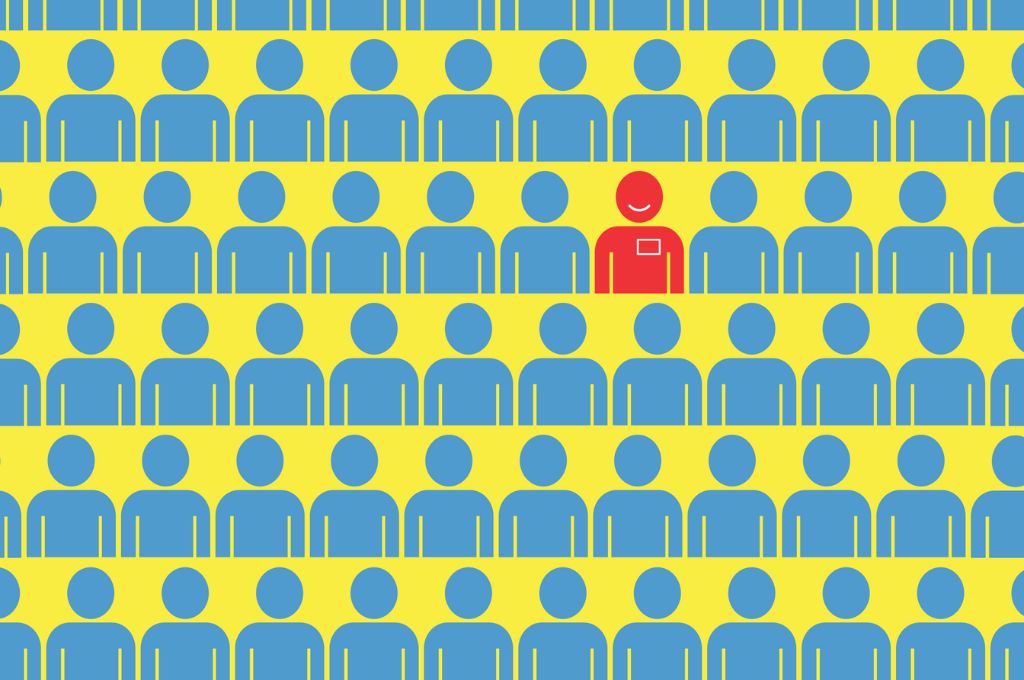Muslim women are significantly under-represented in the workforce. According to the 66th round of the National Sample Survey Organisation (2009–10), out of every 1,000 working women, only 101—a meagre 10 percent—were found to be Muslim. The Sachar Committee report, set up by the UPA government to assess the status of Indian Muslims in 2005, also found the proportion of Muslim women working within their homes to be substantially higher at 70 percent as compared to other communities at 51 percent. The report highlighted the low participation of Muslim women in the workforce as a major reason for Muslims lagging behind in employment ratios. As per the 2011 Census data, the Indian worker population ratio of Muslims was found to be the lowest at 32.6; Hindus and Christians had a worker population ratio of 41 and 41.9 respectively.
While these disparities are very telling, there isn’t sufficient research or data that does a deep dive into these numbers and explores them further. Most of the present literature on the marginalisation of Muslim women focuses on personal law and constitutional frameworks1 rather than on their presence in the labour force. There is also very little conversation in the public domain about their dreams, hopes, and ambitions.
LedBy Foundation, India’s first leadership incubator that focuses on the professional development of Muslim women, conducted a study in June 2022 to investigate this gap between Muslim and Hindu women’s labour force representation. The aim of the research was to understand whether hiring biases are part of the reason for Muslim women not being proportionately represented in the labour market.
Two names, very different responses
To conduct the study, two equally qualified profiles were created to match the market standard for entry-level roles in India. The only variable were the names—Habiba Ali for the Muslim profile and Priyanka Sharma for the Hindu one. These profiles were created without incorporating photographs.
Over the course of eight months, 2,000 applications were sent to 1,000 job postings on sites including LinkedIn and Naukri.com. The jobs applied for included content writing, business development analysis, and social media marketing across different industries. The primary goal of the research was to ascertain a net discrimination percentage by using the number of positive responses to both candidates. The researchers counted all responses of moving to the next round of recruitment as positive. Additionally, they considered instances where companies found ‘Priyanka’ or ‘Habiba’ on LinkedIn and reached out as a positive response.
Out of the 1,000 jobs they applied for, Priyanka got 208 positive responses, whereas Habiba received 103 positive responses, displaying a net discrimination rate of 47.1 percent. Moreover, while 41.3 percent of the recruiters connected with Priyanka over call, only 12.6 percent called Habiba over the phone. The study also showed that industries where the bias was most at play included marketing and advertising, information technology and services, e-learning, and education management.
In essence, for every positive response a Muslim woman gets, a Hindu woman gets two.

What can be done to change this?
While this is an important insight, it is just a starting point. More labour-and employment-focused research needs to be undertaken around Indian Muslim women. Studying how this disparity manifests in positions across states, industries, functions and job levels, job search aggregators, and so on can help further clarify this bias. Other complexities and nuances, such as the presence of hijabi and non-hijabi Muslim women in the workplace, can then be studied in greater detail.
The study also highlights certain systemic issues, which need to be addressed on an urgent basis, with how organisations and industries approach recruitments. Here are some suggestions of best practices for organisations to build a more inclusive hiring process:
1. Blind hiring processes
In blind hiring processes, the name and other non-essential signifiers of identity can be scrubbed from the profile. This can keep biases from creeping into the hiring process. For example, BBC removed candidates’ names and university details from their résumés, while Deloitte’s UK business decided to hide the education pedigree of job applicants from its recruiters and interviewers up until an offer had been extended to help address unconscious bias. Ernst & Young and Reckitt Benckiser are some other companies that are adopting blind hiring to improve diversity in the workplace.
2. Work sample tests
These tests allow the recruiter to judge the candidates based on their ability to do a specific task or on their skills, shifting the focus from other factors such as appearance, gender, age, and religion. A test-first approach can also reduce costs and help companies hire better by eliminating the least suitable applicants, leaving a smaller, better-qualified pool of candidates.
3. Panel recruitment
Having a diverse panel of recruiters allows for a recruitment process that mitigates individual biases. For instance, including more Muslim women in the hiring process will allow more Muslim women to be given a fair shot in the process. Additionally, Muslim women applicants will be more likely to pick an organisation where they see adequate representation.
4. Diversity goals
By setting diversity goals, organisations can prioritise a representative hiring process and make diversity a priority. For example, in 2020, Accenture USA published a series of ambitious goals to diversify their workforce. According to the company, setting public goals allowed for a higher level of accountability. Having diversity goals as part of the company philosophy also ensures companies put together structures to evaluate their own processes regularly and analyse if certain groups face an undue advantage.
5. Facilitating conversations
While structural solutions are crucial, change can also be made at an individual level. Diversity is often not discussed within workplaces, allowing biases and discrimination to go unnoticed. Having conversations that increase awareness, building safe spaces, and demanding more inclusion in the workplace are all effective measures for combating bias.
Equal access to opportunities for Muslim women is vital to society’s social and financial equality. This was a non-exhaustive list of measures that can be taken to navigate biases when building an inclusive hiring process. Increased research within organisations on their diversity profiles and on how they can better innovate to accommodate increased diversity is a crucial but necessary step.
—
Footnotes:
- A Suneetha, ‘Muslim Women and Marriage Laws: Debating the Model Nikahnama’, in Economic and Political Weekly 47, no. 43 (2012), pp. 40–48;
Narendra Subramanian, ‘Legal Change and Gender Inequality: Changes in Muslim Family Law in India’, in Law & Social Inquiry 33, no. 3 (2008);
Nirmala Singh and Rahil Ahmed, ‘Muslim Women and Human Rights’, in The Indian Journal of Political Science 73, no. 1 (2012);
Shashi Shukla and Shashi Shukla, ‘Political Participation of Muslim Women’, in The Indian Journal of Political Science 57, no. 1/4 (1996).
—
Know more
- Learn more about LedBy Foundation’s Hiring Bias study here.
- Read this article to learn more about the underrepresentation of Muslims in the public and private sector in India.
- Read this article to understand why Muslim women are missing from India’s workforce.
Do more
- Support LedBy Foundation by joining its volunteer programme.






